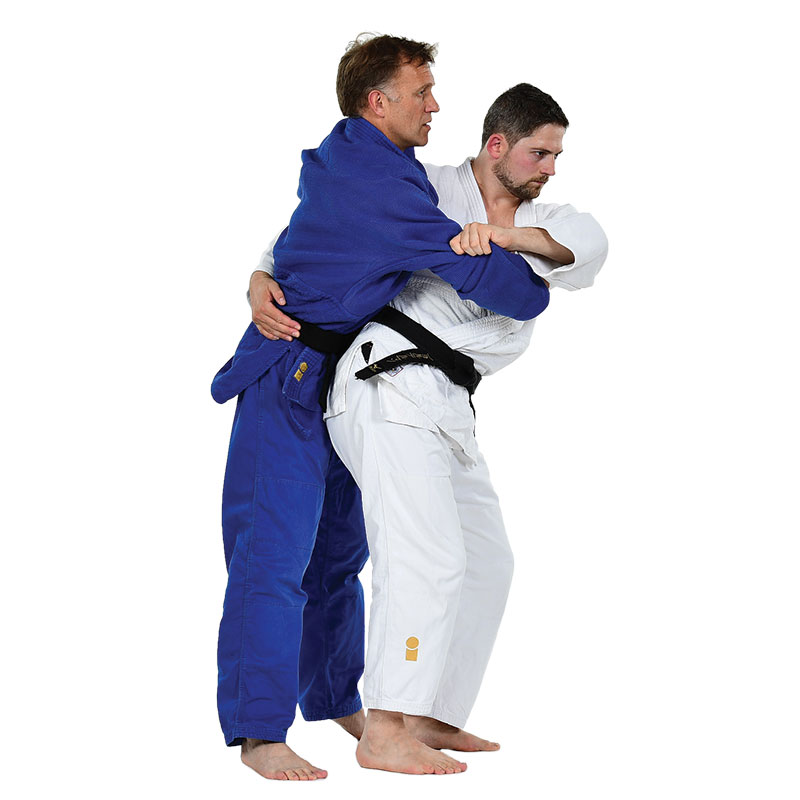O-goshi – 大腰 – Major Hip Throw
Classification: Nage-waza (throwing technique) – Koshi-waza (hip technique)
Difficulty: ★☆☆☆☆ (Basic level)
Kodokan-approved technique
Technical Description
O-goshi is one of the most fundamental hip throws in judo and a classic example of maximum efficiency with minimum effort (精力善用 seiryoku zen’yō). The throw begins by breaking uke’s balance (kuzushi) forward or to their right front corner. Tori enters deeply with their right hip, placing it in front of and slightly below uke’s centre of gravity.
With the right arm wrapped firmly around uke’s lower back or waist, and the left hand controlling the sleeve, tori lifts uke using the hip as a fulcrum and executes a turn to throw uke forward over the hips in a smooth, circular motion.

Biomechanical Principles of O-goshi
O-goshi functions as a lever-based throw, where tori’s hip acts as the pivot point (fulcrum) in the lever system. The movement involves three coordinated forces:
-
F₁ (Action Arm): The pull from tori’s hands and arms to direct uke over the fulcrum.
-
F₂ (Fulcrum): The contact point of tori’s hip, ideally pressing into the lower abdomen or hip line of uke.
-
F₃ (Resistance Arm): The lift from tori’s legs and rotation of the torso to guide uke’s momentum upwards and over.
The combination of these forces creates an efficient and powerful throw with minimal reliance on brute strength. The key is timing, hip placement, and synchronisation of the pull and lift.

Did You Know?
O-goshi is often one of the first throws taught to beginners due to its clarity and foundational mechanics. Despite its simplicity, it is still seen at high-level competition—especially as a setup or transition to other throws.
This technique also forms the basis for understanding more advanced koshi-waza like Harai-goshi and Utsuri-goshi, where hip engagement and timing are equally critical.